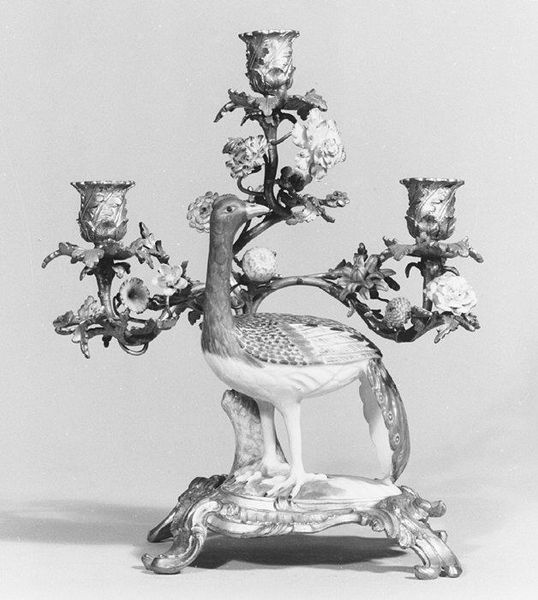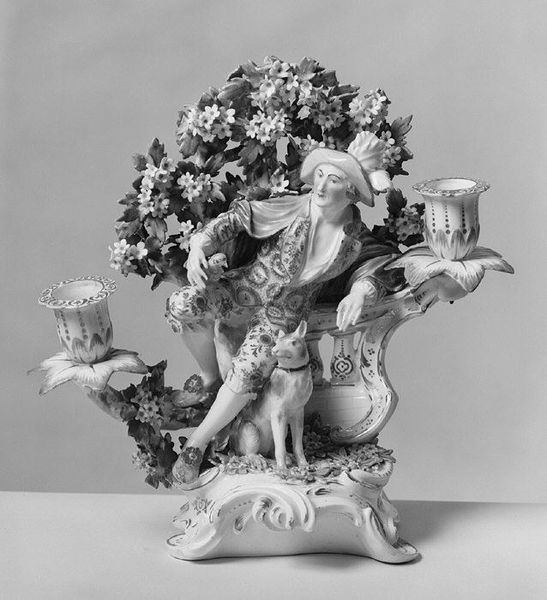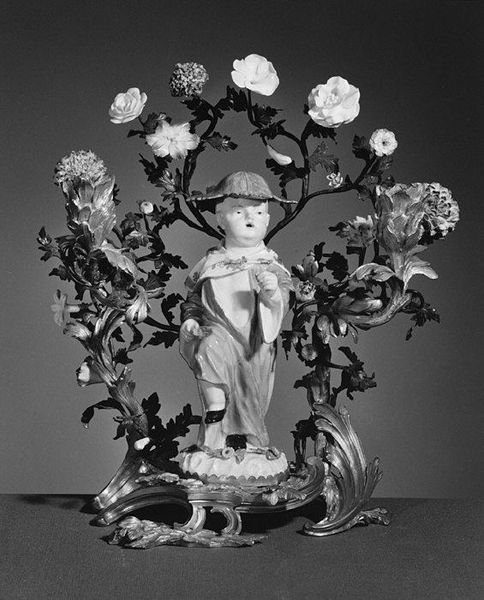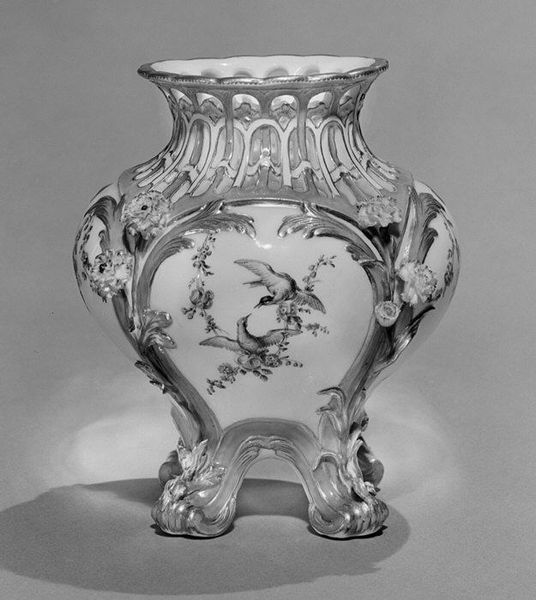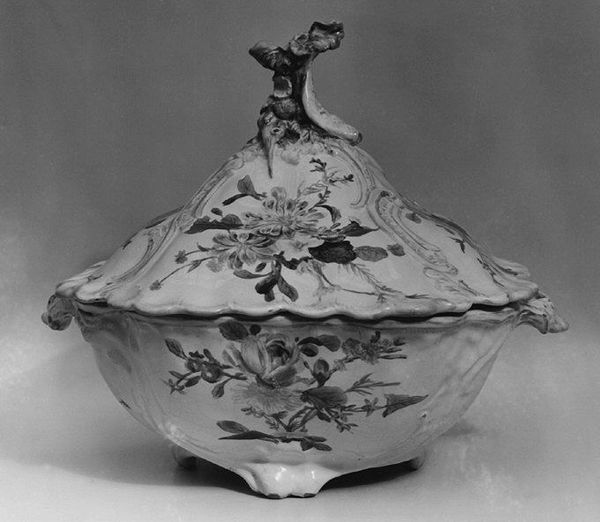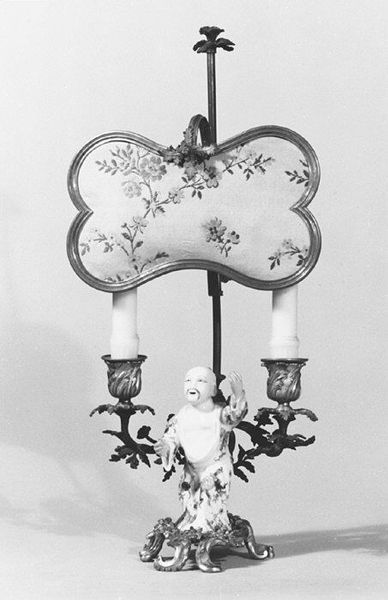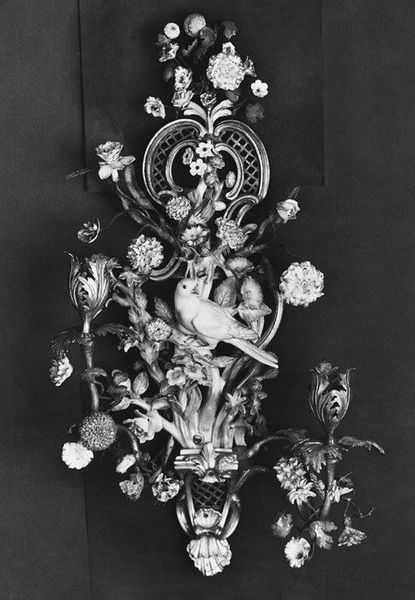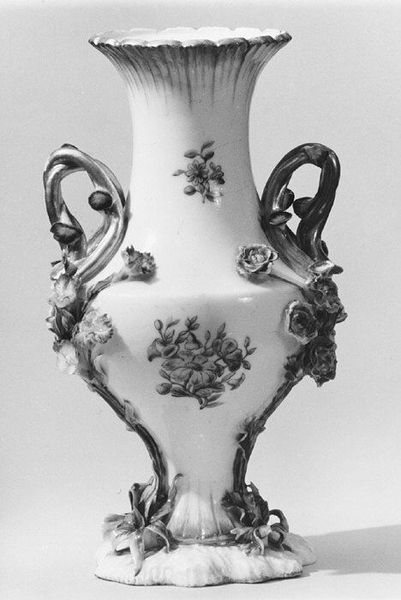
ceramic, porcelain, sculpture
#
sculpture
#
ceramic
#
porcelain
#
sculpture
#
decorative-art
#
rococo
Dimensions: Height: 11 3/4 in. (29.8 cm)
Copyright: Public Domain
Editor: This is the "Candelabrum" made by Meissen Manufactory between 1720 and 1749. It's porcelain, so it’s quite delicate. I am interested in Rococo so this seems like a beautiful, if extravagant, piece of decorative art. What should viewers take away from this work? Curator: Look at the elaborate process required to create this object. From mining the raw materials for the porcelain to the specialized labor of the artisans shaping, firing, and painting it, each stage reflects the social and economic structures of its time. How does this complexity challenge the typical definition of “art”? Editor: That’s fascinating. I hadn't really thought about the mining aspect! Curator: Consider where the materials came from and the potential exploitation involved. Then there's the firing process itself, often fueled by deforestation, to reach the extreme temperatures needed to create hard-paste porcelain. And lastly the labour intensive decorative process. Editor: So, beyond its beauty, it carries a complex environmental and labor history within its form. How was porcelain received back then? Curator: Precisely! Porcelain became a luxury good, traded globally, embodying the power dynamics between Europe and other parts of the world, especially Asia from where the knowledge originated. Do you think appreciating that alters our understanding of this object and decorative art in general? Editor: Absolutely. Thinking about it just as 'decorative art' almost ignores all that hard work. I will consider labor in these pieces. Curator: Indeed. Next time, question the narratives around "high art" versus "craft" and consider the means of production.
Comments
No comments
Be the first to comment and join the conversation on the ultimate creative platform.
